This article may contain affiliate links. Please see our affiliate disclaimer in the footer menu for more information. Thank you for your support!
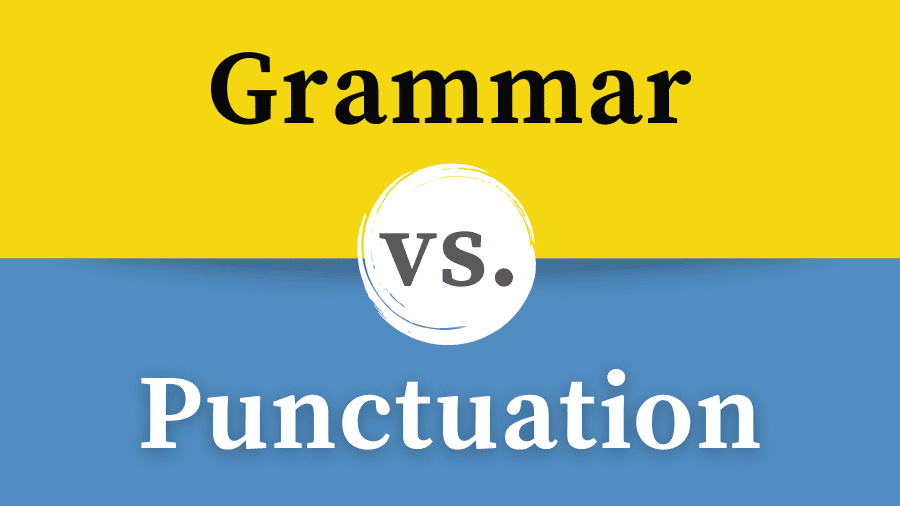
We all use grammar and punctuation to communicate clearly and effectively. However, punctuation and grammar aren’t the same. How are they different?
Grammar is the set of rules that determines how we change the form of words and arrange them within sentences to convey meaning. Punctuation is the set of symbols we use to enhance readability and clarify relationships between elements within sentences and from one sentence to the next.
Let’s delve deeper into the differences between punctuation and grammar and see how they play an integral role in communication.
Grammar vs. Punctuation: What’s the Difference?
Here’s an overview of the differences between grammar and punctuation.
Grammar vs. Punctuation
| Grammar | Punctuation | |
|---|---|---|
| Involves | words | symbols |
| Definition | how words (in various forms) are combined to make sentences | symbols to clarify the meaning and structure of sentences |
| Primary Focus | parts of speech and their syntax | punctuation marks and their placement |
| Ease of Learning | more abstract, requires some analysis | more concrete, mainly requires memorization |
| Changes over Time? | very little | very little |
| Used in Speech and Writing? | yes | used directly in writing and indirectly in speech |
| Best Applied How? | style guide or grammar book | style guide or punctuation book |
The main differences between grammar and punctuation are fairly easy to comprehend. However, I’ll define exactly what grammar and punctuation entail to give you a better understanding.
First, let’s see the similarities between the two.
What Do Grammar and Punctuation Have in Common?
Here are two things grammar and punctuation have in common:
1) We have rules for both grammar and punctuation.
An example of a grammar rule is that the subject and verb must agree.
And one punctuation rule dictates that we put a comma after a dependent clause that comes before the main (independent) clause.
2) We need grammar and punctuation to write a sentence—even a super simple one.
For example, this is a complete sentence:
Run!
The implied subject is you, and the verb is run. But we can’t just write the word run without an ending punctuation mark.
We have three choices for end punctuation: a period, a question mark, or an exclamation point.
In the example above, we’ll pretend I was yelling the word run. Therefore, I need an exclamation point at the end of the sentence.
Now let’s get into grammar and why it’s important. Then, we’ll do the same for punctuation.
What Is Grammar?
Let’s turn to The Chicago Manual of Style (CMOS) for an expert definition of grammar.
CMOS is one of the most commonly used and well-respected style guides for US English.
A Basic Definition of Grammar
“In its usual sense, grammar is the set of rules governing how words are put together in sentences to communicate ideas—or the study of these rules.”
Source: The Chicago Manual of Style, 17th Edition
CMOS also says that native speakers of a language pick up on these rules without conscious effort.
Furthermore, grammar doesn’t just apply to the English language. All languages spoken by people follow grammar rules (source).
A More Complex Definition of Grammar
Here’s how the Merriam-Webster.com Dictionary defines grammar:
“the study of the classes of words, their inflections, and their functions and relations in the sentence”
Source: Merriam-Webster.com Dictionary
This definition is a bit complex, so let’s break it down.
- The phrase classes of words refers to the different parts of speech.
- The word inflections pertains to changes in a word’s form (e.g., a word takes on a suffix) that allow it to reflect a new meaning or be used in a particular way.
- Their functions and relations refer to each word’s role and the relationships between words. The relationships between words depend on sentence structure, aka syntax.
Therefore, grammar encompasses the parts of speech, changes in a word’s form, and syntax.
Let’s briefly look at each of these components.
The Parts of Speech
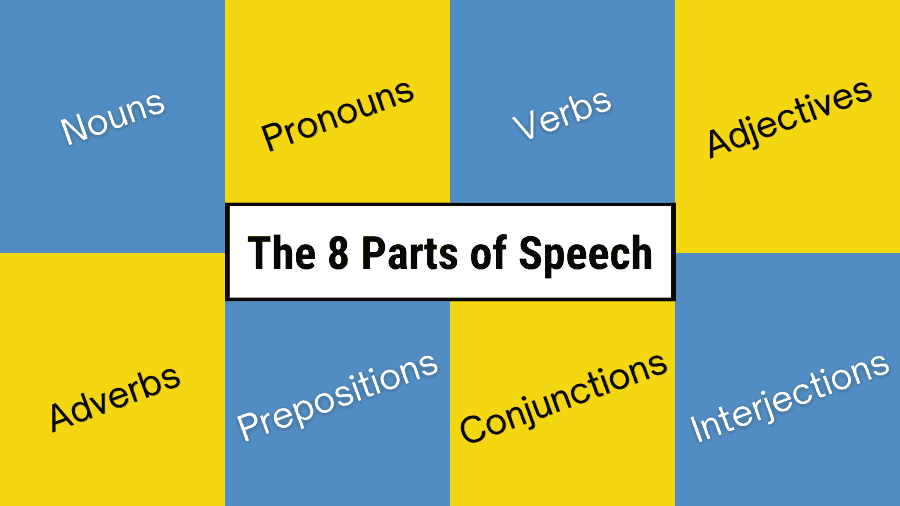
According to traditional grammar, there are eight parts of speech: nouns, pronouns, verbs, adjectives, adverbs, prepositions, conjunctions, and interjections.
Each part of speech plays a particular role within sentences.
Here are definitions of the eight parts of speech with an example and explanation for each.
1) Nouns
A noun is a person, place, thing, or idea.
Example: Whenever Jacqueline goes to Lucky Lanes, she always brings her own bowling ball.
Explanation: Jaqueline is a person, Lucky Lanes is a place, and ball is a thing. They are all nouns.
2) Pronouns
A pronoun takes the place of a noun.
Example: She brings her own ball because it fits her fingers perfectly. (This sentence is based on the sentence from the first example.)
Explanation: She is a pronoun that takes the place of the noun Jacqueline. It is also a pronoun that stands in for the noun ball.
3) Verbs
A verb conveys action or state of being.
Example: Aaron bowls with his left hand.
Explanation: Bowls is the action performed by the subject Aaron.
4) Adjectives
An adjective modifies (tells us more about) a noun or pronoun and answers one of the following questions:
- What kind?
- Which one?
- How many?
Example: Timothy has a shiny ball that brings him luck.
Explanation: The adjective shiny modifies the noun ball. It tells us what kind of ball Timothy has.
5) Adverbs
An adverb modifies a verb, adjective, or another adverb. Adverbs often end in ly, and they answer one of the following questions:
- When?
- Where?
- Why?
- How?
- To what extent? (How often? or How much?)
Example: Jacqueline quickly ran to hug Timothy when she spotted him at the bowling alley.
Explanation: The adverb quickly modifies the verb ran. It tells us how Jacqueline ran.
6) Prepositions
A preposition shows a noun or pronoun’s relationship with some other word in a sentence. Often, prepositions tell us about a spatial relationship.
Example: Blake’s ball is on the return rack.

Explanation: On is the preposition in this sentence. It tells us where the ball is in relation to the rack. The ball (noun) is on (preposition) the rack.
In other words, the word on (preposition) shows us the relationship between the ball (noun) and the rack (another word in the sentence).
7) Conjunctions
A conjunction joins words, phrases, and clauses.
Example: Denise wanted to go bowling with her friends, but she had to work instead.
Explanation: But is a coordinating conjunction that (along with the comma) joins the first independent clause with the second one.
8) Interjections
An interjection expresses a reaction or a strong emotion.
Example: Wow! That was a sweet strike, Aaron.
Explanation: Wow is the interjection expressing amazement at Aaron’s bowling skills.
Some Words Can Serve as More than One Part of Speech
Certain words can function as more than one part of speech, depending on the context in which we use them.
For example, depending on the sentence, we can use the word close as an adjective or an adverb.
As an adjective: Blake and Timothy have been close friends for a long time.
Explanation: In this sentence, the word close is an adjective modifying the noun friends. It tells us what kind of friends Blake and Timothy are.
As an adverb: Jacqueline wanted Timothy to sit close to her.
Explanation: Here, the word close is an adverb modifying the verb sit. It tells us where Jacqueline wanted Timothy to sit.
Changes in a Word’s Form

We know that inflection refers to how words change form.
When words change form, they take on a different gender, number, tense, case, voice, mood, or person (source).
Let’s see a few examples.
1) A Change in Gender
We can modify the gender of the word steward from masculine to feminine by adding the suffix ess.
- steward becomes stewardess
2) A Change in Number
We can alter the number of the word tree from singular to plural by adding s.
- tree becomes trees
3) A Change in Tense
We can shift the tense of the word walk from the present to the past by adding ed.
- walk becomes walked
Now that we’ve seen how a word’s form changes with inflection, let’s see how a sentence’s meaning changes based on syntax.
Syntax
Syntax is the part of grammar that deals with the order in which we combine words to form phrases and clauses. Simply put, syntax refers to sentence structure.
Using proper sentence structure allows us to communicate ideas clearly.
If you’re taking a course to learn a new language, your teacher may give you a group of words to unscramble. This unscrambling exercise would help you understand the language’s syntax.
There are syntactical differences between languages.
For example, an adjective can come before or after the noun it modifies in both English and Spanish.
However, the adjective usually comes before the noun it modifies (e.g., black shirt) in English.
But if you’ve studied Spanish, you know the adjective typically comes after the noun it modifies (camisa negra = shirt black).
An Example of the Importance of Syntax
Consider these two sentences with the same words but in a different order:
- The baby kicked the grown-up.
- The grown-up kicked the baby.
We can laugh at the first sentence when baby is the subject and grown-up is the object. Just imagine a happy and excited baby boy who accidentally kicks an adult with his cute, chubby little leg.
But when grown-up is the subject and baby is the object, our cute story takes a turn for the worse.
Why Is Grammar Important?
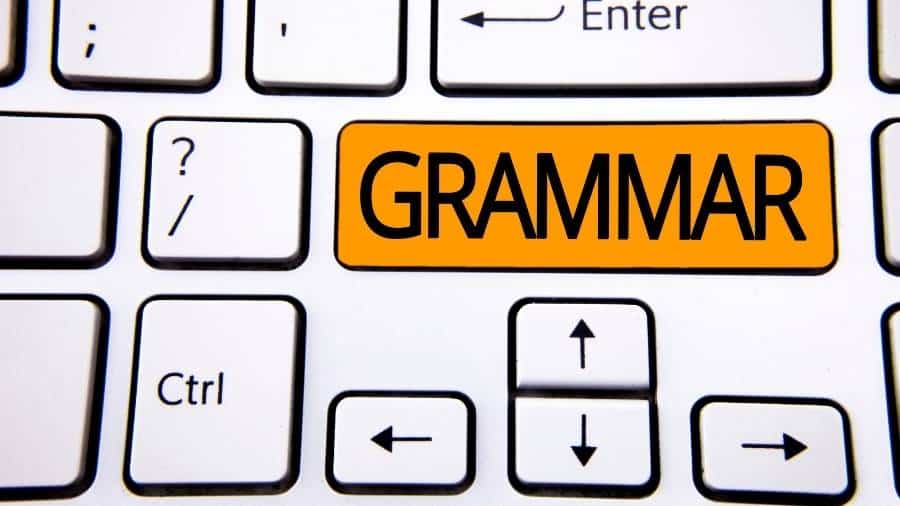
Grammar is essential because it gives us the tools to write in a way others will understand. It also allows us to write efficiently and effectively. This way, the reader has a pleasant experience since they can comprehend our message with minimal effort.
Below, I’ve written two brief paragraphs about Jane and her hobbies. Which version do you prefer?
Version 1: Jane likes to go to the movies. Jane like playing with her friends. Jane enjoys playing with her puppy. Jane enjoy teaching her puppy new tricks. Jane likes going to the beach in the summer.
Ugh. Jane, Jane, Jane. Have we heard her name enough? Are you ready for Jane to contemplate a name change?
Jane likes this. Jane likes that. Jane likes this. Yikes! This is a one-note passage for sure—and it’s not without a couple of grammar gaffes.
Version 2: Jane likes to go to the movies. She also likes playing with her friends. Jane enjoys playing with her puppy and teaching him new tricks. She likes going to the beach in the summer too.
Which version do you prefer?
Although we could do more to spice up version 2, it far outshines the first version.
In version 2, I made the following changes:
- used pronouns to replace nouns
- combined clauses for a variety of short and long sentences
- fixed both errors in subject-verb agreement present in version 1
- added the words also and too to make the passage less monotonous
What would we do without grammar—specifically, good grammar? I don’t even want to think about it. 😉
If you’d like to upgrade your grammar game, feel free to read my article about improving your grammar skills.
What Is Punctuation?
Let’s turn to a reputable dictionary for a solid definition of punctuation.
Merriam-Webster.com Dictionary defines punctuation as follows:
“the act or practice of inserting standardized marks or signs in written matter to clarify the meaning and separate structural units”
Source: Merriam-Webster.com Dictionary
In other words, punctuation involves putting symbols into sentences to improve clarity and separate grammatical elements.
In her book Painless Grammar, Rebecca Elliott cleverly refers to punctuation marks as road signs.
Just as road signs help us navigate streets, punctuation marks show us how to navigate sentences.
As we discuss common punctuation marks, you’ll see the most frequent uses for each. Then, you’ll better understand how writers use these marks to help us comprehend the sentences they craft.
Although overlap exists between some punctuation marks, good writers consider the subtleties underscoring these “road signs” so that they know which sign to use under given circumstances.
What Are the Most Common Punctuation Marks?
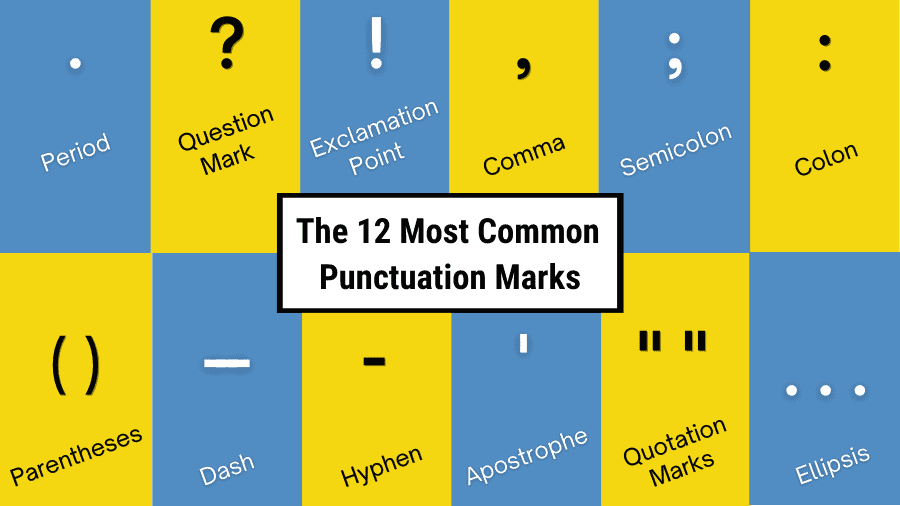
The twelve most common punctuation marks are periods, question marks, exclamation points, commas, semicolons, colons, parentheses, dashes, hyphens, apostrophes, quotation marks, and ellipses.
These symbols help us read sentences the way the writer intends for them to be read.
1) Period .
A period (called a full stop in UK English) signifies the end of a sentence.
A period can come at the end of a declarative or imperative sentence.
A declarative sentence simply declares (states) something.
Example: Jacqueline went bowling with her friends.
An imperative sentence requests or commands someone to do something.
Example: Give Jacqueline her lucky bowling ball.
2) Question Mark ?
A question mark comes at the end of an interrogative sentence.
An interrogative sentence asks a question.
Example: Did Denise go bowling with her friends?
3) Exclamation Point !
An exclamation point comes at the end of an exclamatory sentence.
An exclamatory sentence usually expresses a strong emotion like anger, excitement, or surprise.
Example: Aaron had a blast bowling with his friends!
Strong emotions can also be expressed in an imperative sentence involving a firm command.
Example: Give Jacqueline her lucky bowling ball right now!
4) Comma ,
A comma indicates a slight pause and separates elements within a sentence.
Example: Aaron spent the morning eating breakfast with his family, and he went bowling with his friends in the evening.
5) Semicolon ;
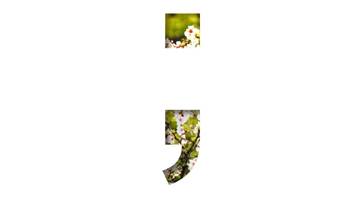
A semicolon separates two closely related independent clauses.
An independent clause is a simple sentence because it has both a subject and verb, and it expresses a complete thought.
A semicolon shows more separation than a comma but less separation than a period.
Example: Aaron’s concentration was at its peak; he was ready to bowl a strike.
6) Colon :
A colon comes after an independent clause (a complete sentence) and explains or gives more information about that independent clause.
Colons are also used to introduce some lists.
Example: Timothy has his own bowling gear: a leather bag, a shiny ball, and sleek shoes.
7) Parentheses ( )
Parentheses set off additional, often explanatory, information that may or may not match the rest of the sentence grammatically.
Example: Timothy (whose mom is a professional bowler) participates in a junior bowling league.
8) Dash —
A dash, like parentheses, calls for a pause and sets off extra information within a sentence.
Example: Blake—an avid bowler—got five strikes in a row.
9) Hyphen –
A hyphen joins two or more words to provide clarity.
Example: Blake has a part–time job working at Lucky Lanes bowling alley.
10) Apostrophe’
An apostrophe shows possession and represents letters omitted in contractions (e.g., can’t, you’ve, it’s).
Example: Blake’s bowling ball is electric blue.
11) Quotation Marks “”
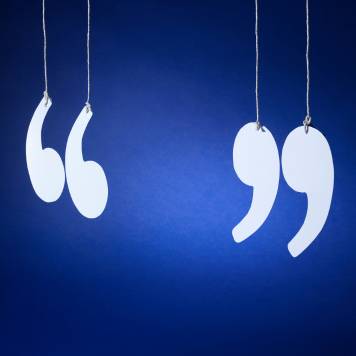
Quotation marks indicate dialogue.
Example: Timothy yelled, “Nice roll, Jacqueline!”
12) Ellipsis . . .
An ellipsis shows where words have been omitted from a quoted passage.
It also denotes faltering speech and speech that trails off.
Example: “But . . . but . . . I thought we would finally beat you all in bowling after all these years! How did you just bowl your twelfth strike in a row?”
Some Punctuation Marks Have Similar Duties
While learning about punctuation marks, you may have noticed that we can use commas, parentheses, and dashes to set off information within a sentence.
So how do we know which of these three punctuation marks to use?
In her book The Best Punctuation Book, Period, June Casagrande gives us expert advice:
“Commas are used when the writer feels the information should be well integrated into the sentence. Parentheses indicate the information is less integral to the sentence. Dashes can serve as something in between, clearly setting off the text from the main sentence without sending a message that it’s less important.”
Source: The Best Punctuation Book, Period
Why Is Punctuation Important?
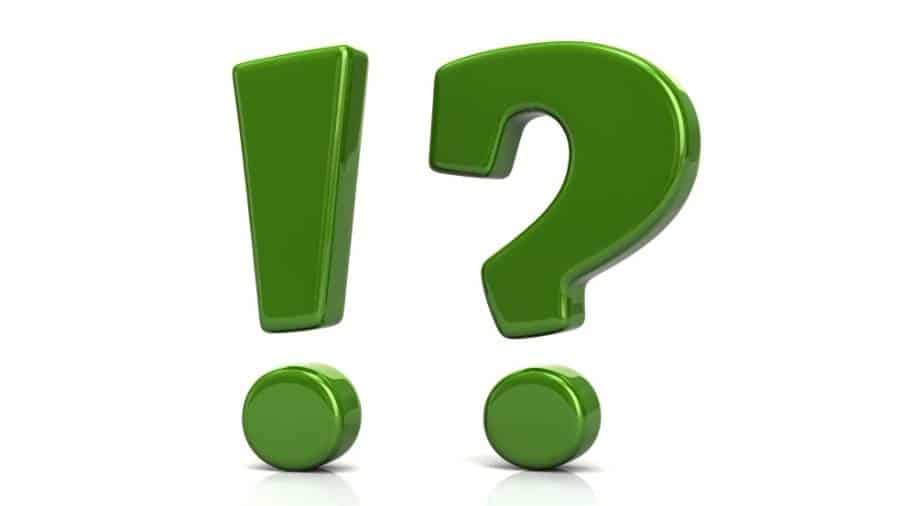
Punctuation is important because it serves as our guide for how to read sentences. Specifically, punctuation helps clarify meaning by showing us how sentence elements are related. It also aids our understanding of the writer’s tone.
One of the best illustrations of the importance of punctuation comes from a popular internet meme. It makes you consider what would happen if someone forgot the comma in this phrase: I’m sorry, I love you.
Written with the comma, the writer is apologizing and telling the other person they love them.
Without the comma, the writer regrets that they love the other person. Oops!
As a teacher, I told my five- and six-year-olds that a sentence ends with a period. To show them the importance of periods, I would pick up a children’s book and read four sentences in a row without pausing.
They laughed when they heard how comical it sounded for me to read and read without coming up for a breath. 😊
If you’d like to boost your punctuation proficiency, check out my article about enhancing your punctuation know-how.
Now that we’ve seen how punctuation and grammar help us communicate effectively and how these two terms differ, let’s look at some common questions.
Frequently Asked Questions

Are grammar and punctuation the same?
Grammar and punctuation are not the same, but they’re related. Rules govern both, and both are needed to write a complete sentence.
However, grammar deals with how we choose, change, and combine words to impart meaning. Punctuation pertains to how we place symbols within sentences to improve readability and show the relationships between various sentence elements.
Does grammar cover punctuation?
Grammar does not cover punctuation. Grammar deals with how words change form and come together to make meaningful sentences. Punctuation refers to the symbols we use to separate grammatical units and clarify a text’s meaning.
Is a comma a part of punctuation or grammar?
A comma is a part of punctuation because it is one of the symbols we use to enhance the readability of a text. These symbols separate grammatical structures in a meaningful way. Grammar relates to words, how they change forms, and how they combine to form sentences.
Is punctuation part of grammar or syntax?
Punctuation is not part of grammar or syntax. Punctuation is a set of symbols showing how sentences are meant to be read and understood. Grammar refers to how words change forms and combine to make sentences. Syntax is the part of grammar that deals with the order of words in a sentence.
I hope these answers helped you differentiate between some of the terms we come across when talking about language.
If you’d like to read a similar article, check out my post “Grammar vs. Vocabulary (Differences and Examples).”
I’ve also written posts discussing the differences between grammar and spelling and grammar and usage.
Best wishes to you!
“You will never be able to escape from your heart. So it’s better to listen to what it has to say.”
– Paulo Coelho

Recent Posts
Punctuation is important because it enables us to communicate our message clearly and effectively. Without punctuation, we wouldn’t understand how units of a sentence relate to one another or how...
Although you're probably somewhat familiar with adverbs, you may be unaware of sentence adverbs. As a trained proofreader who has studied the parts of speech, I can help you understand this unique...
